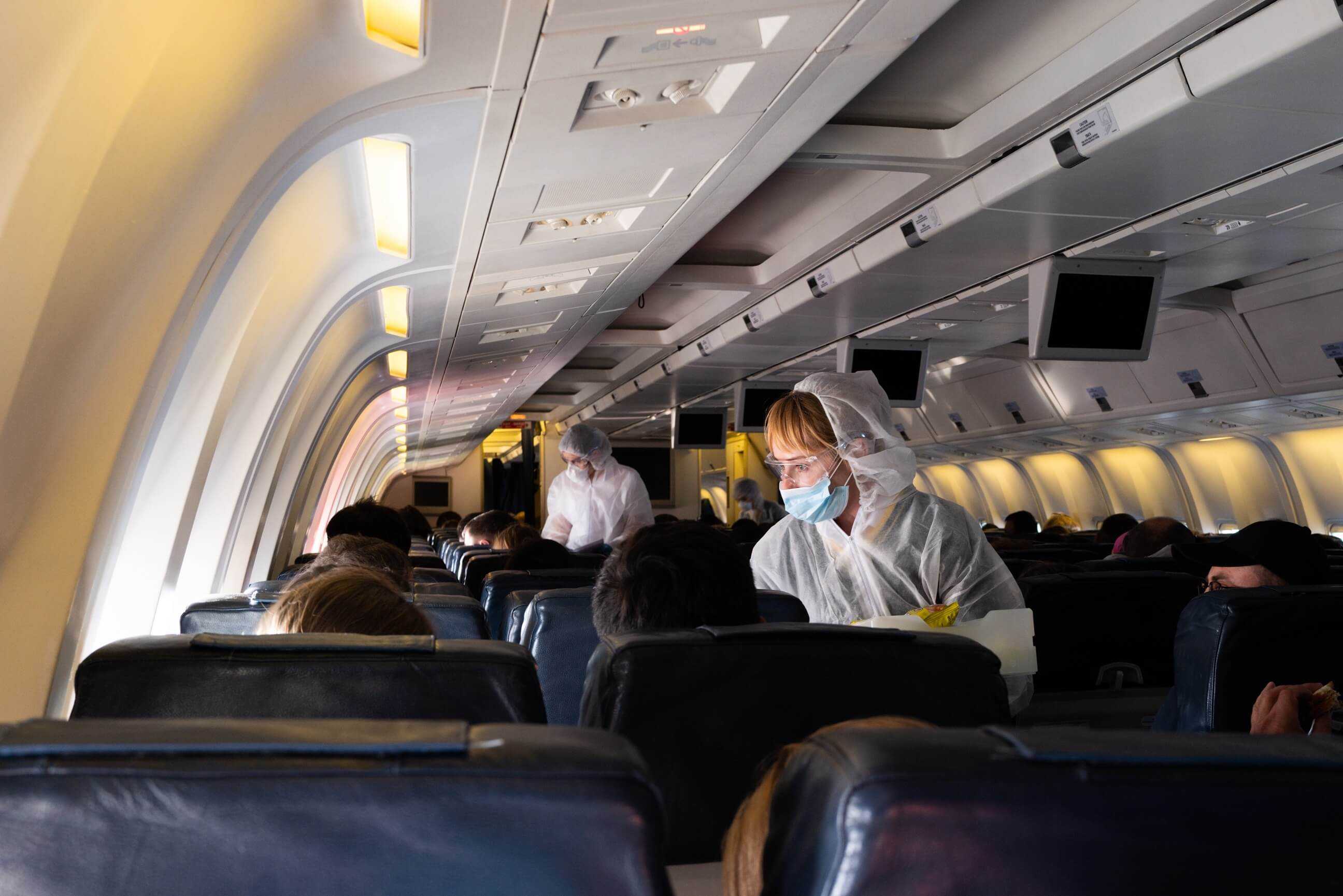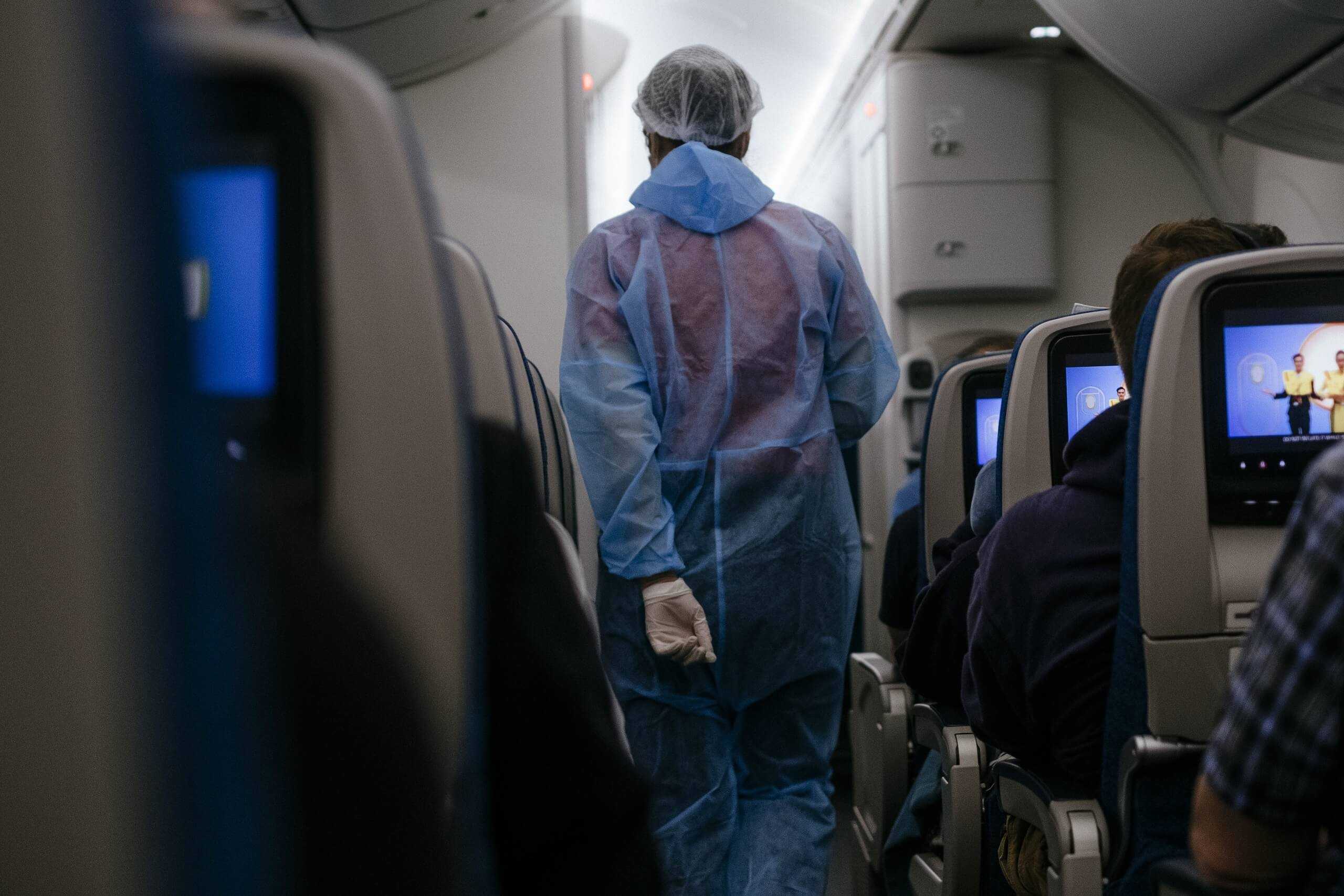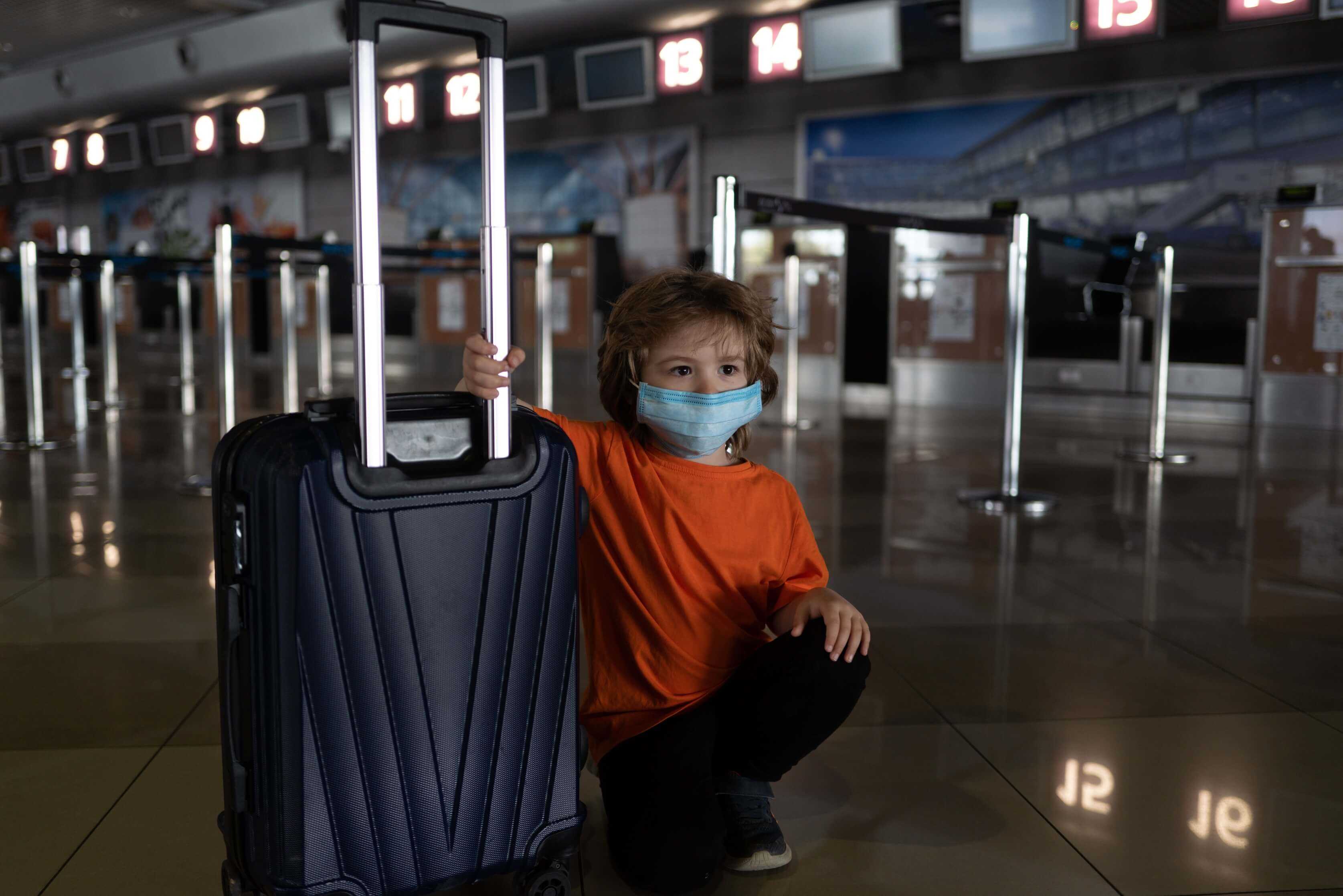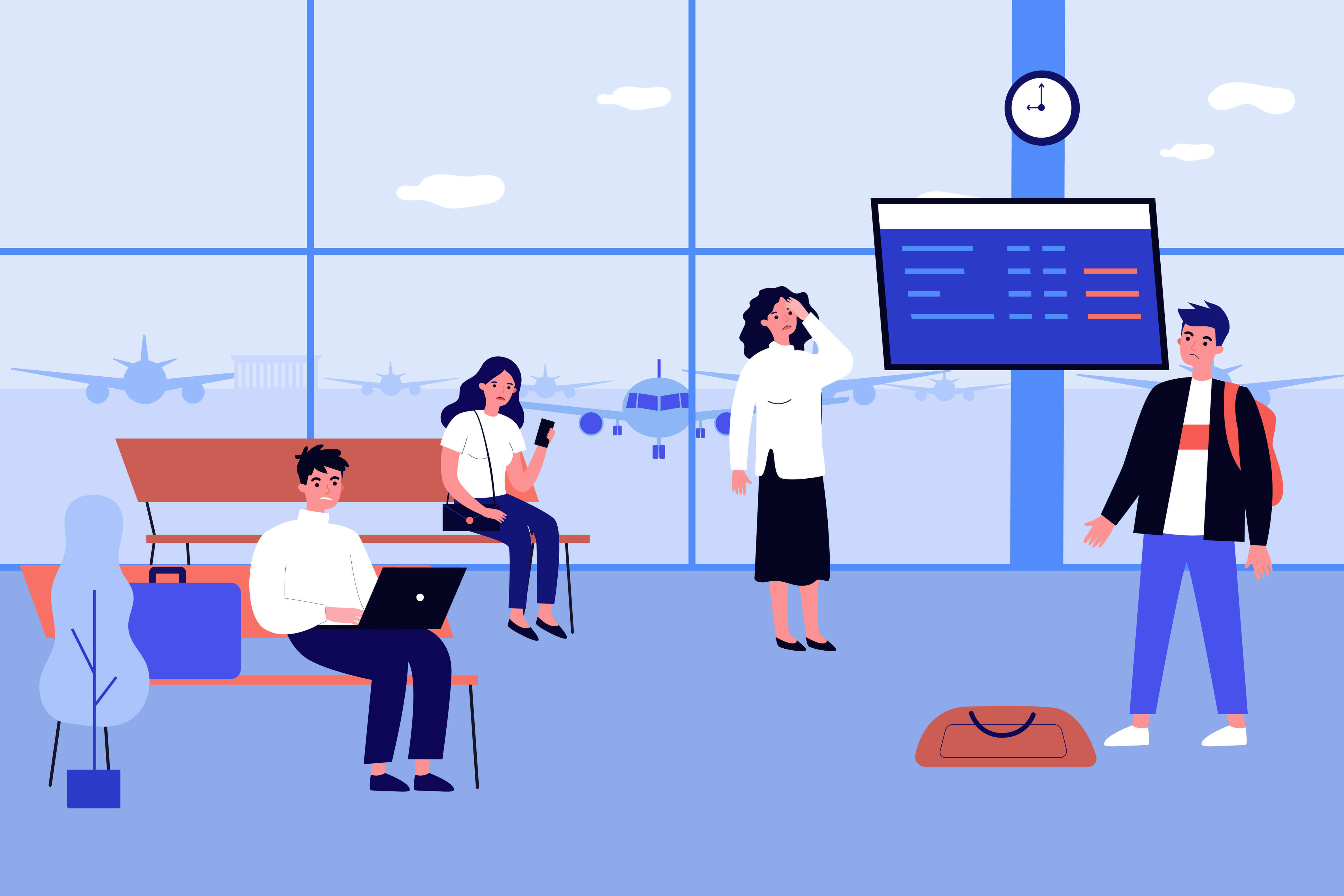How safe is your next flight?

As of 15th of June, most of the travel restrictions in Europe have been lifted and air traffic is now slowly resuming. Starting from the 5th of May all passengers and airline crew members are required to wear face masks and/or protective clothing at the departure and arrival airports and during the flight. Some airlines also consider a 62% seat occupancy in order to provide passengers with more space to travel safely. This would mean that the airlines could leave a free seat between passengers on every row. However, reducing the occupancy to this extent would result in additional losses for the airlines who are already struggling due to the corona pandemic and the cancelled flights in the past 3 months.
Airlines’ protective measures
So what are some of the potential solutions? What do airlines plan to do to minimize the risk of infection during the flight? Social distancing can be successful on the ground, but what happens in the aircraft? Firstly, the airlines will attempt to avoid all direct contact with passengers. In the terminal itself, for instance, floor markings and display stands should indicate that passengers need to keep their distance when waiting. In addition, if the passengers need to take a bus to reach the aircraft, more transfer buses should be provided to guarantee abundant distance between the passengers. The boarding process should be contactless and it should take place in small groups. There are also plans to reduce the in-flight service such as the distribution of food and drinks. The goal is to ensure that the passengers do not remove their protective masks during the flight. The airlines will also rely on greater hygiene in the airplane by using sufficient disinfectant and gloves. Seats, belt buckles, tables and backrests will be disinfected more often.
The decision to leave an extra seat between passengers does not seem practical at this moment, considering the economic situation, because in this way the airlines will lose a substantial amount of earnings. According to the calculations of the International Air Transport Association (IATA), airlines like Lufthansa, for example, would only be able to sell 62% of all seats if the middle seat has to be left free. However, airlines can only make a real profit when they have a seat load factor of 75% or more. Reducing the occupancy would in turn affect the ticket prices immensely. It is predicted that airlines would have to raise their ticket prices by more than half, which could be a reason for many travelers to give up flying completely. Considering these forecasts, many airlines intend to overlook the safety recommendations slightly instead of doubling their ticket prices.

Stewardess in protective clothing and mask. Source: Adobe Stock
How does the corona virus circulate through the cabin air?
Experts point out that the longer people share a common airspace, the higher the risk of a virus spread. When many people breathe the same air together for several hours, the exposure to the virus is still possible even if the air circulation system in the aircraft is excellent. The air in the cabin is continuously filtered and mixed with fresh oxygen from the environment, which ensures good air quality. But the filters in the aircraft only retain bacteria, not viruses. Therefore, the air in the airplane is relatively safe, but not safe enough to prevent possible infection. The fact that the passengers do not sit opposite each other, but behind each other, on the other hand, reduces the probability of contracting COVID-19, but only when there is sufficient distance between the neighboring seats.
Pandemic specialists believe that a free middle seat could help minimize the risk of infection. They also suggest that there should be plexiglass separators between seats and rows, but that would probably not be feasible from a safety point of view. Additionally, experts disregard the airlines’ idea to measure the temperature of passengers before departure. Even if a person has a fever, this does not necessarily mean that they have been infected with the corona virus. On the other hand, not every corona patient has a high fever. In such a case, only a quick test can provide certainty.
Spread of the corona virus at airports and how to prevent it
Flying, however, is not the only risk we face when travelling. The fact is that many people from different countries cross paths at the airports and could then spread the infection all over the world. Travelling to the airport by public transport is also considered a health risk, as well as waiting in line before the flight, checking in your luggage and going through the security checks. The same applies to boarding and disembarking the airplane. For this reason, passengers are urged to follow the social distancing rules and the hygiene guideline issued by the Robert Koch Institute. It is also announced that passengers will receive a free hygiene kit with mask, gloves, antibacterial wipes and hand disinfectant at check-in. Therefore, flying during the corona pandemic will require a high degree of discipline from everyone involved – passengers, airline crew and airport staff members. So, if you do decide to travel, we hope you follow the distancing and hygiene rules and we wish you a safe journey!

Travelling during the corona pandemic. Source: Adobe Stock
Top image: Adobe Stock
Latest posts
Mastering summer travel with your credit card: 10 essential tips
From transfer partners to trip insurance, here are ten tips to make your summer travel more affordable and enjoyable.
Top 10 travel booking portals for summer 2024
Renowned portals, tour operators, as well as meta search engines offer a vast array of choices.
AI takes flight in airline pricing
This innovative approach has attracted significant attention from major airlines such as Virgin Atlantic and Royal Air Maroc.
About MYFLYRIGHT
MYFLYRIGHT is a legal tech company, specialized in the support of airline passengers affected by flight delays, flight cancellations, denied boarding, delayed or lost luggage and the refund of unused airline tickets. MYFLYRIGHT was founded 2016 in Hamburg, Germany. The company operates out of 3 offices, its headquarter in Hamburg and its branches in Prague, Czech Republic and Zaporizhia, Ukraine. Currently, MYFLYRIGHT employs a team of around 25 people working in Marketing, Operations, Legal, Customer Support and IT. The organization operates across 5 markets – Germany, United Kingdom, Romania, Austria, and Switzerland.
MYFLYRIGHT’s goal is to provide access to justice for all aviation passengers who experience irregularities in their flight transportation. Notably, 75% of all compensation requests submitted by passengers get rejected. Whereas, MYFLYRIGHT is able to successfully execute the applicable customer claims in more than 98% of cases at court.












